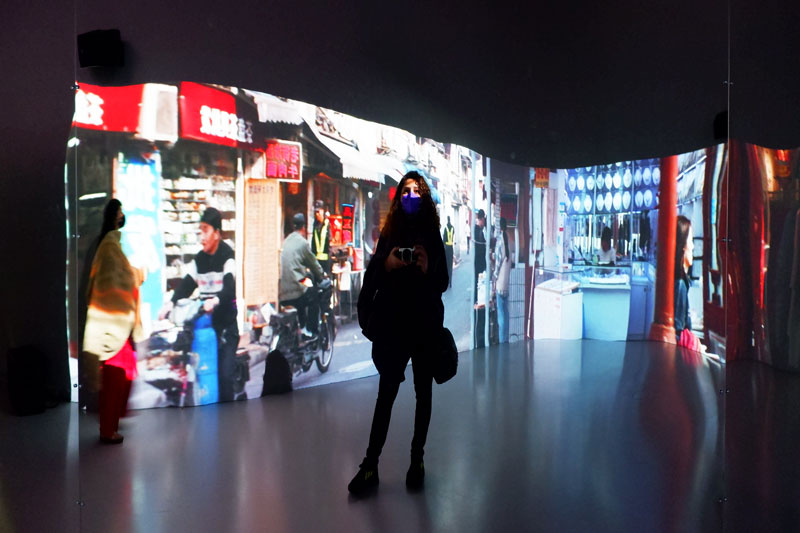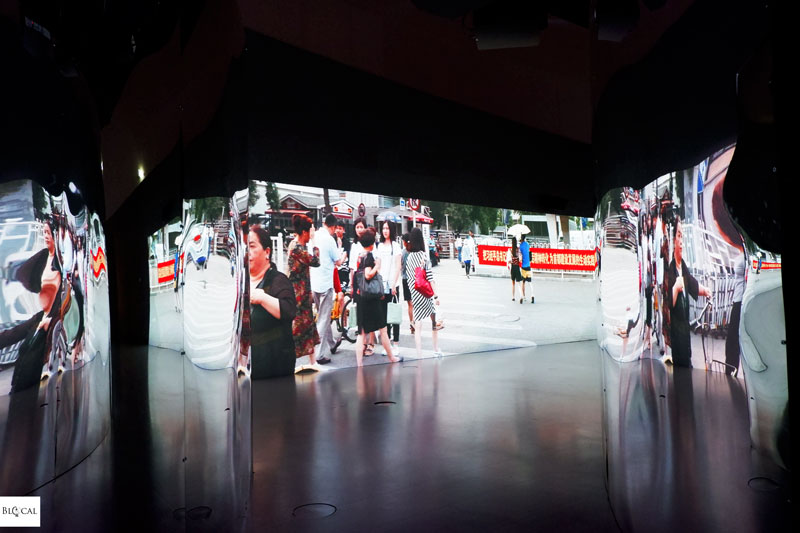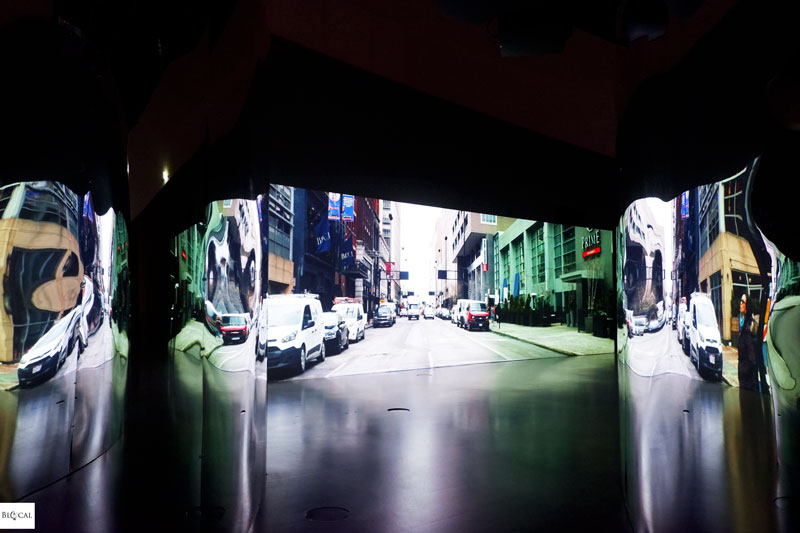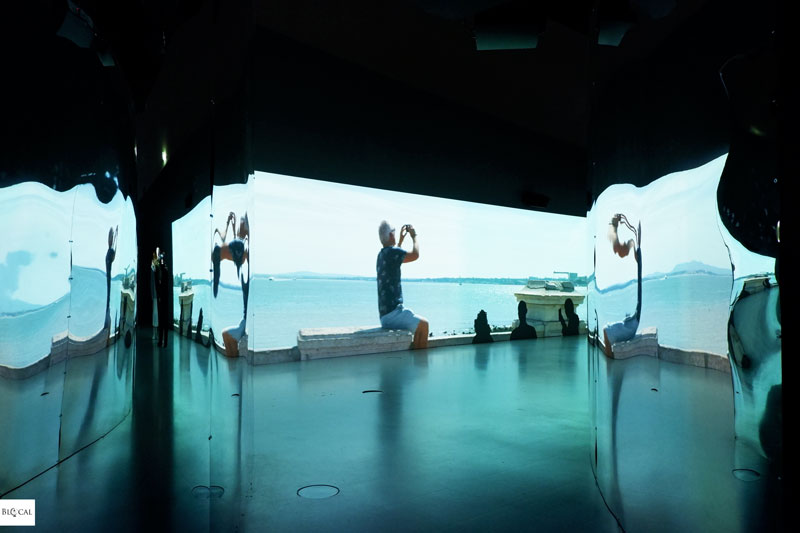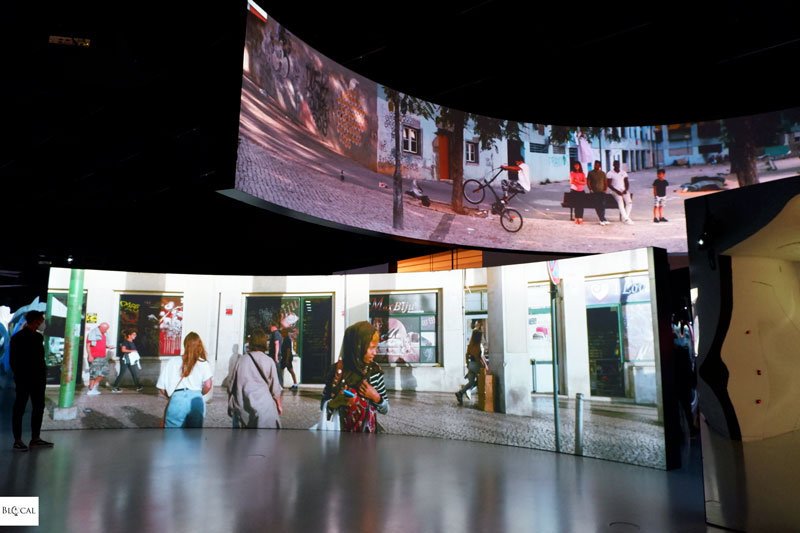Last week I finally made it to Vhils’ monumental exhibition at Lisbon’s MAAT Museum, an immersive experience that took me around the world.
By entering the audiovisual labyrinth of “Prisma,” I was immediately mesmerized by the scale of the installation and the slow pace of the videos, which document the everyday environments and lives in nine different cities.
To put it in Vhils’ words:
“Prisma is a large-scale immersive experience devised to create impact and arouse different reactions and emotions while underlining the complexity of human existence within globalized urban contexts. Playing with space, scale, and light, it comprises a labyrinth of video footage shot in nine cities across the globe, reflecting upon the increasing homogenization of our societies and creating conflict between the private nature of introspection and the public dimension of communal existence”
Vhils
The exhibition brings together Vhils’ visual reflections on nine different cities the artist visited before the pandemic. Many of them are in Asia, a country of extreme urbanization and home of Vhils’ second studio (which he opened in 2012 in Shanghai).
In the same way he developed his street practice by working with what was already there (as opposed to adding something to the public space), Vhils presents to us what he saw and straightforwardly recorded in the streets of nine different cities. He leaves us with a commentary on the passage of time and how the public space might reflect who we are – and he does so without interfering with the subject.
Through video footage projected on curved, large-scale screens, the artist investigates the essence of these cities and the point of connections between them, alongside the impact of globalization on people worldwide.
The loss of the identity of cities in our globalized world has been at the core of Vhils’ artistic research for many years already, although he used to express it through a completely different medium. While drilling his iconic portraits in the public space, the artist realized how much of who we are stems from our cityscape. Crowded with advertising and visual noise, the urban context has started overshadowing Vhils’ iconic portraits which, over the years, have become increasingly abstract until eventually disappearing in this exhibition, where the environment has stepped into the foreground and completely taken over, thus becoming the protagonist.
At Prisma, the subject of the artwork is a series of random, not remarkable moments shot in the public space, banal scenes where the identity of the people represented isn’t relevant at all. Instead, the inhabitants of these cities are treated as crowds, flocks of people crossing intersections or sitting at cafés.
However, the loss of inhabitants’ identity is restored by the connection established with the viewers through the highly engaging labyrinth of large-scale screens. Their anonymity is compensated by the familiarity of the mundane routines represented; I could engage with the people in the videos in the same way I engaged with the people portrayed by Vhils in the streets. Moreover, the representation of everyday people -on camera as well as on walls- shows Vhils’ intention to make us connect with our own humanity.
Click play to walk with me through the installation:
Although the medium is radically different, I found many similarities with Vhils’ street work. Besides the familiar topics of urbanization, worldwide homogenization, loss of city’s identities, and loss of people’s identity, the slow-motion technique recalls Vhils’ mission to seize the moment and make time slow down. In the same way he used to capture and eternalize everyday people on walls, Vhils keeps doing the same thing, albeit on video, in the recent evolution of his artistic practice. The artist still wants us to slow down the pace and pay attention to the banal moments as a precondition for living more consciously.
Moreover, Vhils still aims at making visible something that people generally overlook, like the layers building upon each other in the public spaces (layers that he approached with dynamite in the past and with a camera in the present) as well as the impact that all these layers have on us without us even knowing it. Technically speaking, also the videos projected within “Prisma” are made of layers since the figures in the foreground move at a different pace than the ones in the background.
The last similarity I noticed wasn’t intended, yet it adds lots of meaning to the installation. In the same way he used to carve into the city’s past and bring different ages to the surface, Vhils collected video images of how we lived in the public space before the pandemic, involuntarily bringing to the present time gestures that belong to a collective past.
